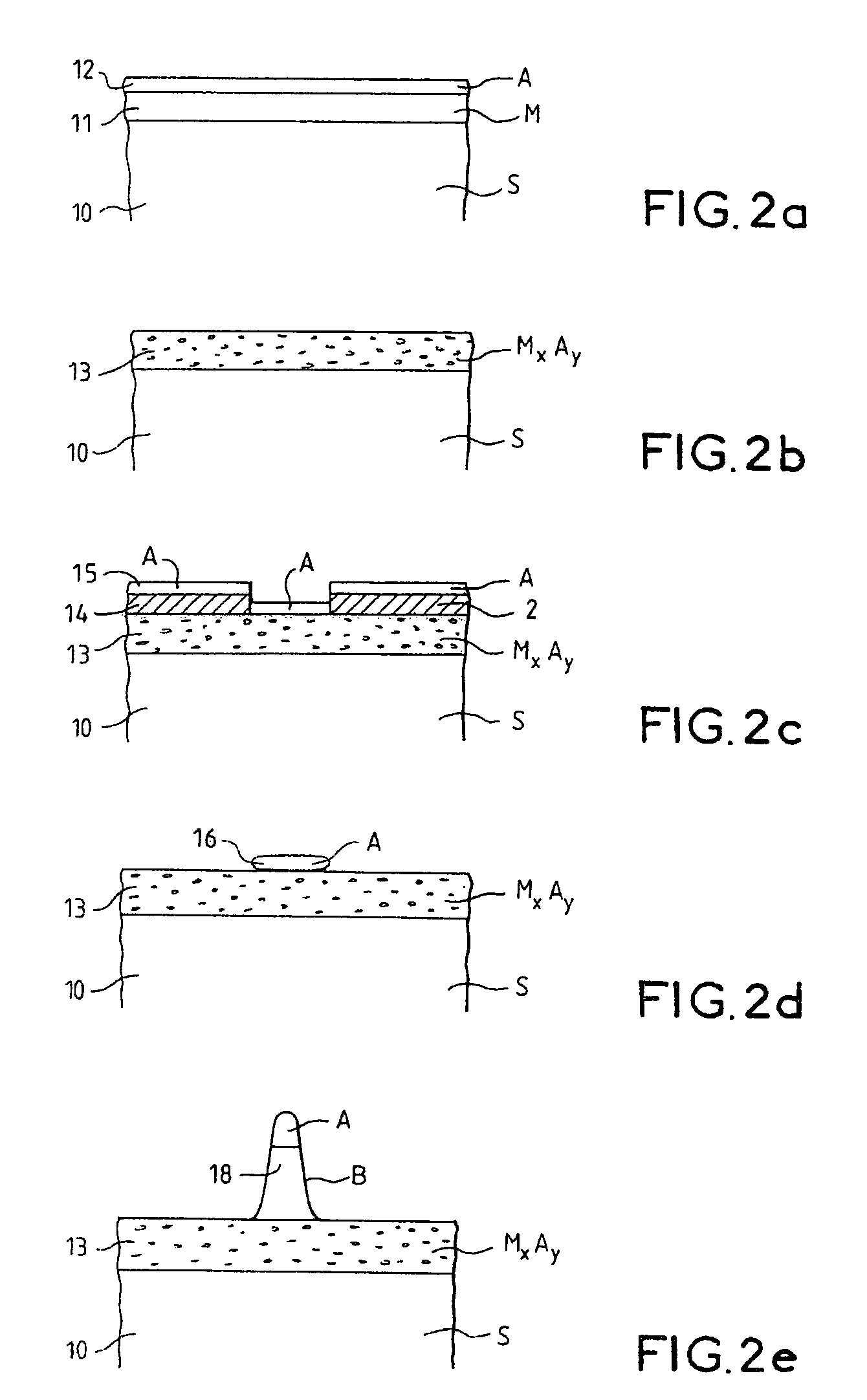Method for catalytic growth of nanotubes or nanofibers comprising a NiSi alloy diffusion barrier
a diffusion barrier and nanotube technology, applied in the direction of crystal growth process, polycrystalline material growth, condensed vapor growth, etc., can solve the problems of poor insulating material, poor growth control of nanotube/nanofiber, and inability to grow nanotube/nanofiber effectively
- Summary
- Abstract
- Description
- Claims
- Application Information
AI Technical Summary
Benefits of technology
Problems solved by technology
Method used
Image
Examples
1st example
Material M: Silicon
Material A: Nickel
[0045]In the case of a silicon substrate or of a thin silicon layer deposited on a substrate, a thin nickel layer is deposited on the silicon. An annealing operation at 750° C. is then carried out so as to provide the compound NiSi.
[0046]The addition of platinum prevents the formation of the alloy NiSi2 and therefore allows only the compound NiSi to be obtained (J. F. Liu et al., J. Appl. Phys. Vol. 90 p. 745 (2001)). The NiSi alloy then constitutes an effective diffusion barrier against nickel if the nanotube growth temperature is below 750° C. It should be noted that the localized and oriented growth of carbon nanotubes may be obtained at 700° C. (K. B. K. Teo et al., Appl. Phys. Lett. Vol. 79 p. 1534 (2001)).
[0047]It is also possible to carry out the annealing at 850° C. so as to form NiSi2, which constitutes a diffusion barrier for nanotubes / nanofibers whose growth temperature is below 850° C.
[0048]A higher nanotube growth temperature (˜800° ...
2nd example
Material M: Silicon
Material A: Cobalt
[0050]In this second example, a cobalt layer is deposited on the surface of a silicon layer. To obtain a uniform CoSi2 alloy and therefore to prevent the formation of the CoSi phase, the annealing may advantageously be carried out at a temperature above 600° C.
[0051]A thickness of around 30 to 60 nm of cobalt makes it possible to obtain, after annealing at 800° C. the CoSi2 alloy (Y. J. Yoon, J. Vac. Sci. Technol. B17 p.627 (1999)). This compound formed at 800° C. then becomes an effective diffusion barrier for the cobalt catalyst, if the nanotube growth temperature is below 800° C.
3rd example
Material M: Silicon
Material A: Iron
[0052]An FeSi2 barrier layer may advantageously be formed by annealing an iron layer on the silicon surface at 700° C. This barrier layer may be used for the growth of nanotubes / nanofibers at temperatures below 700° C.
PUM
| Property | Measurement | Unit |
|---|---|---|
| thickness | aaaaa | aaaaa |
| thickness | aaaaa | aaaaa |
| height | aaaaa | aaaaa |
Abstract
Description
Claims
Application Information
 Login to View More
Login to View More - R&D
- Intellectual Property
- Life Sciences
- Materials
- Tech Scout
- Unparalleled Data Quality
- Higher Quality Content
- 60% Fewer Hallucinations
Browse by: Latest US Patents, China's latest patents, Technical Efficacy Thesaurus, Application Domain, Technology Topic, Popular Technical Reports.
© 2025 PatSnap. All rights reserved.Legal|Privacy policy|Modern Slavery Act Transparency Statement|Sitemap|About US| Contact US: help@patsnap.com



